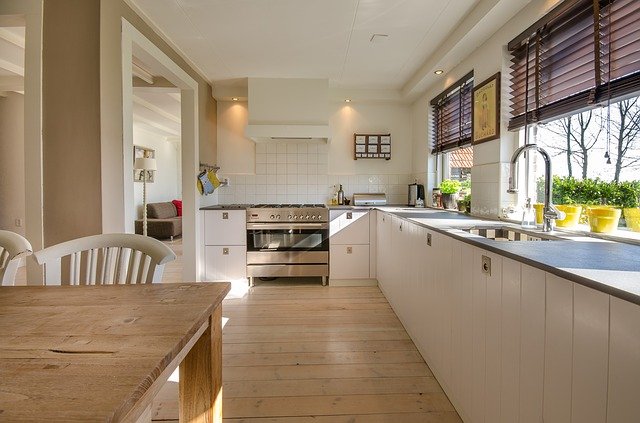
Every year, you should make it a priority to upgrade certain things. These projects can be scaled to fit your budget, but you should still plan to make some small improvements to your home. Whether large or small, improvement only adds to the value of your home.
1. Paint or Wallpaper
This is an old standby that can stand you in good stead. If you’re looking for a way to update your home, but haven’t decided on any major projects, this is a good way to start. Simply choose your paint color or easy-to-hang (and remove) wallpaper, set time aside one weekend, and begin your project. It won’t take long, and adds a breath of fresh air to your design, even if you haven’t refurbished your décor in quite a while.
2. A Bathroom Update
While it will cost between $3,000 and $12,000 for a mid-level update, it’s worth it, so long as you have the money to spend. Think natural stone countertops, new cabinets, a frameless glass shower door, new fixtures, and hardware for the cabinets. This is not something you’d plunge into overnight. It’s definitely a process that will require planning and attention to detail. You can make it as minimal as you’d like, but it’s definitely something that will pay off in the end. Plan it to perfection.
3. New Appliances
Everyone loves new appliances, whether you’re in your home for the next twenty years or are ready to sell. Plus, brand new items like a dishwasher can be as high tech as you’d like for very little extra. Alternatively, you can go old-school with a classic range if you love to cook. Choose the features you love, evaluating every angle from original cost to potential repairs in the years to come.
Go ahead and plan in a whole kitchen’s worth or one at a time. The savings on more energy-efficient models will help to budget later on in the year. As well, if they should need a light or a wire replaced in the longer view, an appliance repair service is a very small fee to pay for no service call fees and on-demand repairs.
4. Update the Lighting Fixtures
Depending upon how upscale you’d like to go, this can run into the thousands of dollars. However, it’s still considered a smaller renovation. If you have a dim area in your house that you’d like brightened up, take a moment to envision how you’d like it to look, browse the home décor magazines, and take your time shopping. There’s a very good chance that what you’re looking for has a less expensive doppelganger out there.
It’s important to do this one room at a time, but don’t get too carried away in a single space. Updating lighting can be less expensive in areas where you need only one layer of light, but more expensive in rooms where you need task lighting as well for those more finicky procedures. Remember to take your time and keep your options open.
5. Update Your Landscaping
There’s never a bad time to start planning a bit of curb appeal. Because this is the first thing that any visitor to your home will see, it’s important that you design for four seasons. Yes, that includes winter, when many things have died back. But it isn’t as difficult as you might think. There’s no need to spend a boatload in the garden section at the bookstore. In fact, you can select a few well-chosen plants and plan their blooming from spring to autumn.
Build on what’s already there. The landscapers did some work to make your home appealing if you’ve purchased something recently built, so don’t let it go to waste. Study the original lines they laid down and slowly build upon them. Evergreen shrubs, as well as those that look good even when their flowering time is done, are a great bargain. And whenever possible, plant perennials and native species to attract birds and pollinators to your yard.
Of course, there are many ways to update your home, but don’t let that daunt you. Simply pick a few projects each year and layout your budget. It doesn’t matter whether it’s small or large. What matters is that you make the effort.


